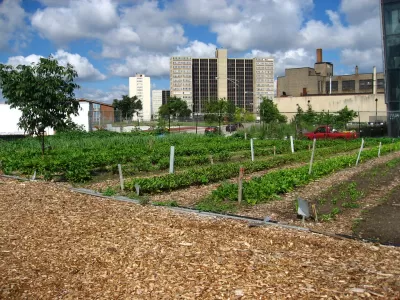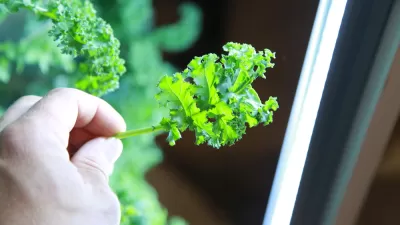Community-supported agriculture (CSA) programs originally let local buyers support local growers. But with a rise in subscription-based "food box" clubs, it's getting harder to say what a real CSA looks like.

There's always been some overlap between alternative and local agriculture, and community-supported agriculture has been a way to operationalize small and local growers for decades. But a new wave of digital entrepreneurs is crowding the space with subscription-based "food box" services, not all of them local.
Samantha Melamed writes, "Now, though, small farmers [...] are finding themselves in competition with a slew of subscription-based food vendors, from meal-kit boxes like Blue Apron to mail-order produce boxes like Farmbox Direct to aggregators who mix local produce with stuff from Florida or Mexico."
Traditional CSA farmers like Emma Cunniff take issue when these services brand themselves as CSAs. "'I've noticed so many cooperative-buying clubs; they're not CSAs, but they have adopted that title because it's really hot and sexy right now. Some of their farms are up to 250 miles away. That's not local agriculture.'"
Nevertheless, the CSA business model has proven useful to entrepreneurs who finance and source from small farming operations. Whether or not they call themselves CSAs—and perhaps they shouldn't—food box subscriptions and similar services have attracted clientele.
FULL STORY: New CSAs may be 'hot and sexy,' but they're not really CSAs

Alabama: Trump Terminates Settlements for Black Communities Harmed By Raw Sewage
Trump deemed the landmark civil rights agreement “illegal DEI and environmental justice policy.”

Planetizen Federal Action Tracker
A weekly monitor of how Trump’s orders and actions are impacting planners and planning in America.

The 120 Year Old Tiny Home Villages That Sheltered San Francisco’s Earthquake Refugees
More than a century ago, San Francisco mobilized to house thousands of residents displaced by the 1906 earthquake. Could their strategy offer a model for the present?

In Both Crashes and Crime, Public Transportation is Far Safer than Driving
Contrary to popular assumptions, public transportation has far lower crash and crime rates than automobile travel. For safer communities, improve and encourage transit travel.

Report: Zoning Reforms Should Complement Nashville’s Ambitious Transit Plan
Without reform, restrictive zoning codes will limit the impact of the city’s planned transit expansion and could exclude some of the residents who depend on transit the most.

Judge Orders Release of Frozen IRA, IIJA Funding
The decision is a victory for environmental groups who charged that freezing funds for critical infrastructure and disaster response programs caused “real and irreparable harm” to communities.
Urban Design for Planners 1: Software Tools
This six-course series explores essential urban design concepts using open source software and equips planners with the tools they need to participate fully in the urban design process.
Planning for Universal Design
Learn the tools for implementing Universal Design in planning regulations.
Clanton & Associates, Inc.
Jessamine County Fiscal Court
Institute for Housing and Urban Development Studies (IHS)
City of Grandview
Harvard GSD Executive Education
Toledo-Lucas County Plan Commissions
Salt Lake City
NYU Wagner Graduate School of Public Service



























